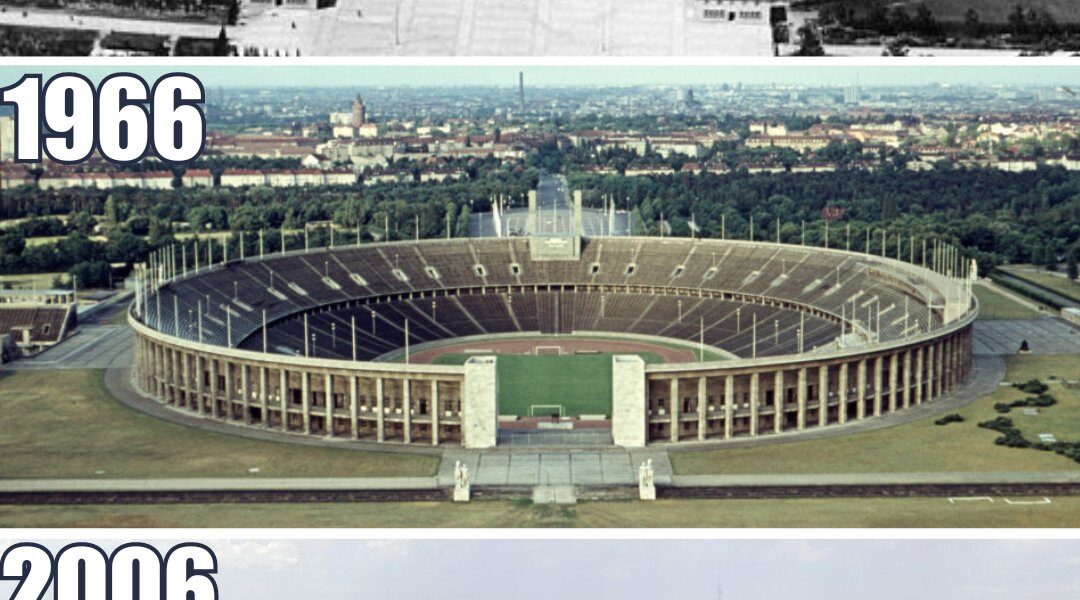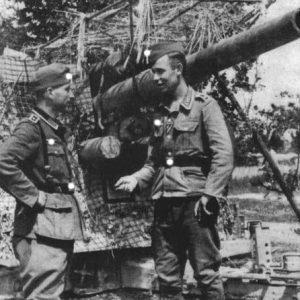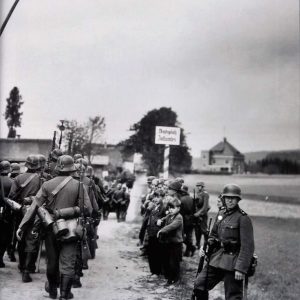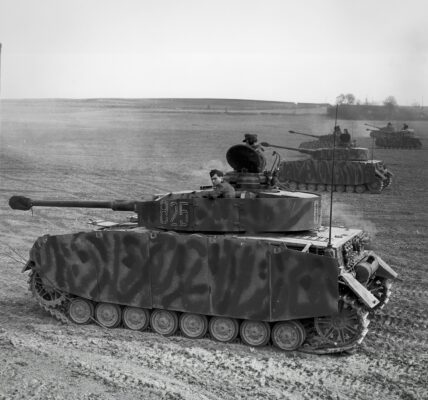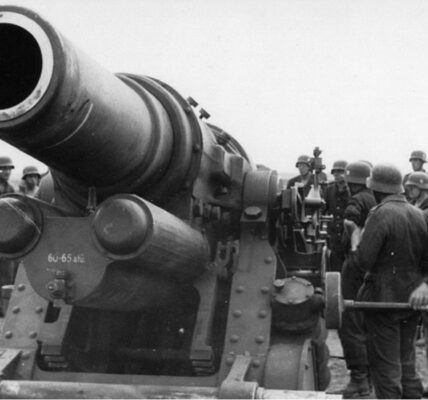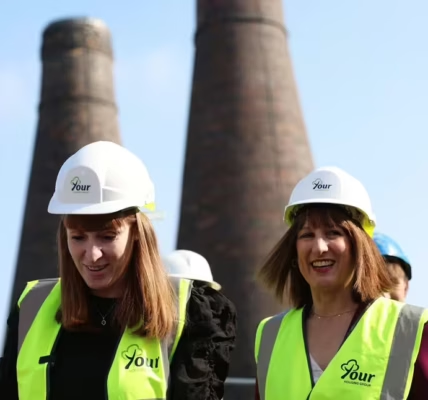Olympiastadion Berlin: The path from political icon to global sports icon (1936–2006) _de

The history of the Olympic Stadium in 12 pictures: From the ceremonial opening by the Nazis to the eerie silence of the pandemic.
In 2036, the Olympic Stadium will celebrate its 100th anniversary. Today, football fans (or at least Hertha fans) get emotional at the sight of the mighty arena, but this building witnessed the darkest era of German history. At the same time, it set global standards for modern architecture.
Hitler attends the opening on August 1, 1936.

In 1936, the Summer Olympics took place in Nazi Germany. The so-called “German Stadium” existed on the site of today’s Olympic Stadium until 1934. In preparation for the competitions, Adolf Hitler had a larger stadium built on the same site within just 28 months.
The Olympic Stadium is thus an example of preserved architecture from the Nazi era in Berlin . Numerous symbols of this era are still present today – such as the Olympic bell (see below). The former “Führer’s Lodge,” from which Adolf Hitler once watched the events in the stadium, now serves as a VIP lounge.
The 1936 Summer Olympics

During the Olympic Games, Germany presented itself as a peaceful, cosmopolitan nation, even though preparations for war were in full swing.
Hitler basked in the praise and admiration he received for his massive stadium. Photographs of the event were taken from dizzying heights by the largest zeppelin of all time, the Hindenburg. Germany emerged as the most successful nation, winning 89 medals.
… The Olympic Games

Where Hitler’s Führer’s lodge once stood, the VIP lounge is now located: In the picture above, the Nazi elite observes the hustle and bustle in the stadium; today, guests of honor enjoy five-star cuisine in the same place.
Celebrations in Nazi Germany on May 1, 1938

Even before the Nazis came to power, May 1st was considered International Workers’ Day. But the National Socialists appropriated the date, and in 1933, Hitler presented himself as its patron saint. He declared May 1st a public holiday on which people could stay home and still receive their full wages.
From then on, the Nazis turned May Day into a huge spectacle. There were processions and parades of the Nazi Party, the Hitler Youth, and the SS. The Olympic Stadium was the center of all this pomp and circumstance.
After years as a spy base: Police Sports Festival 1956

Amazingly, the Olympic Stadium remained virtually undamaged after the war compared to the rest of the city . The stadium, then still known as the “Reichssportfeld,” was taken over by the British after the war and used as an espionage base against the GDR.
In 1949, the Olympic Stadium was returned to the German authorities and given its current name. Major events in West Berlin, such as the 1956 Police Sports Festival, could now take place there.
Nazi relic: The Olympic bell

A special Nazi relic can be seen west of the south gate of the Olympic Stadium: the Olympic Bell. With the opening of the stadium, the five-meter-high steel bell was hoisted into the bell tower as an Olympic symbol.
After the war, the dilapidated tower was demolished, and the steel colossus collapsed and cracked. This is still clearly visible today, and the bell, thanks to the imperial eagle and swastika, can be clearly identified as a Nazi relic.
New paint needed: The renovation of the Olympic Stadium

A good ten years after German reunification, in 2000, the renovation of the dilapidated Olympic Stadium was due. On July 3, 2000, the first excavators entered the historic arena. The renovation cost approximately 250 million euros, largely funded by the federal government.
Further renovations, 2004

The renovation took four years, exactly twice as long as Adolf Hitler’s original construction. Seventy percent of the historic structure was preserved, all the stands were roofed, and an extensive floodlight system was installed. Furthermore, the blue running track was redesigned in the club colors of Bundesliga club Hertha BSC.
Rain, rain, go away.

The Olympic Stadium was already partially covered for the 1974 World Cup. However, during the recent renovation, a comprehensive roof with floodlights over all the stands became another hallmark of the stadium, alongside the blue athletics track. The continuous floodlight system, known as the Ring of Fire, prevents shadows from forming during football matches.
Olympic Stadium as a venue for concerts and festivals

International and some national stars (well, maybe only Helene Fischer) can also fill the Olympic Stadium – festivals are also occasionally held, such as Lollapalooza 2019. The arena can accommodate just under 75,000 spectators, although it has been rather quiet in recent years.
Empty seats and snow in February 2021

In February 2021, the coronavirus had Germany and the world firmly in its grip. Football matches at the Olympic Stadium were played behind closed doors, while Berliners endured the winter at home.
The Golden Chapel in the stadium opens at every Hertha BSC home game

Club or religion? On the ground floor of the Olympic Stadium, there’s a chapel with walls covered in gold leaf. It’s located directly between the players’ lounge and the players’ tunnel.
Since the 2006/2007 season, it has been open for every Hertha BSC home game and can also be rented by anyone who wants to make their wedding or baptism particularly unforgettable.
